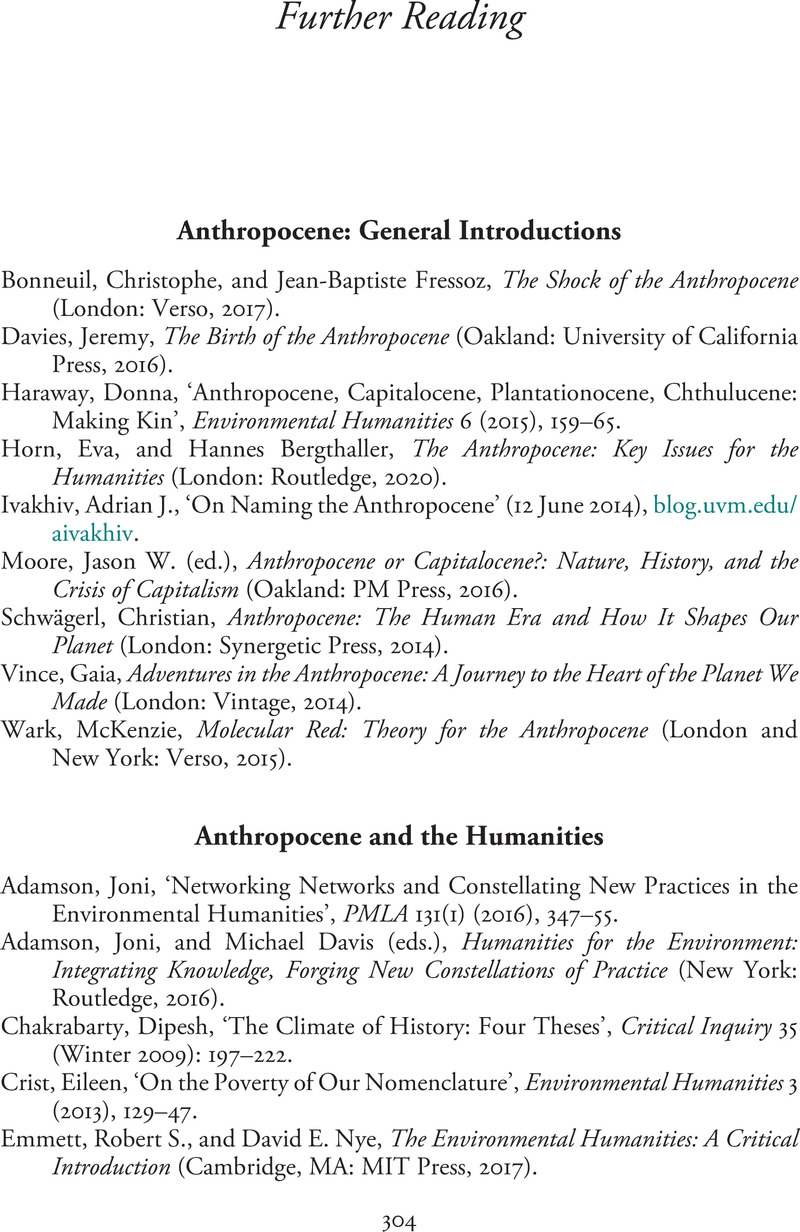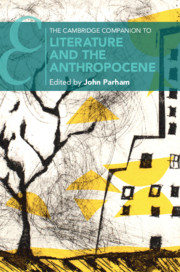Book contents
- The Cambridge Companion to Literature and the Anthropocene
- The Cambridge Companion to Literature and the Anthropocene
- Copyright page
- Contents
- Figures
- Contributors
- Acknowledgements
- Chronology
- Introduction
- Prologue Earth, Anthropocene, Literary Form
- Part I Anthropocene Forms
- Part II Anthropocene Themes
- Further Reading
- Index
- Cambridge Companions To …
- References
Further Reading
Published online by Cambridge University Press: 28 July 2021
- The Cambridge Companion to Literature and the Anthropocene
- The Cambridge Companion to Literature and the Anthropocene
- Copyright page
- Contents
- Figures
- Contributors
- Acknowledgements
- Chronology
- Introduction
- Prologue Earth, Anthropocene, Literary Form
- Part I Anthropocene Forms
- Part II Anthropocene Themes
- Further Reading
- Index
- Cambridge Companions To …
- References
Summary

- Type
- Chapter
- Information
- The Cambridge Companion to Literature and the Anthropocene , pp. 304 - 309Publisher: Cambridge University PressPrint publication year: 2021



